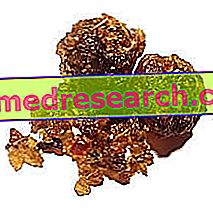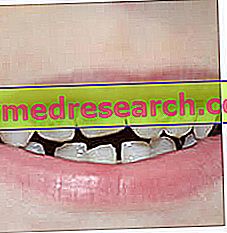
Scientific name
Commiphora mukul
Family
Burseraceae
Origin
India, Pakistan.
Used Parts
The drug consists of the oleoresin obtained from the bark of the branches and the trunk of the plant, commonly called guggul gum.
Chemical constituents
- Polysaccharides;
- Lignans;
- Steroid compounds (gugulsterone E, gugulsterone Z, guggulsterol IV);
- Essential oil.
Guggul in Herbalist: Property of the Guggul
This plant is used in Ayurvedic medicine as a remedy for anti-inflammatory and anti-rheumatic activity, as well as being used also in cases of asthma, otitis and ascites.
A glycerine-sequestering activity has been demonstrated for the guggul, with reduction of seborrhea and cholesterolemia.
Biological activity
As mentioned, the guggul is attributed to cholesterol-lowering and lipid-lowering properties.
These activities traditionally ascribed to guggul gum are mainly attributed to the steroid compounds contained within the oleoresin extracted from the plant.
The exact mechanism of action by which guggul gum is able to lower blood lipid levels has not yet been fully clarified. Among the most reliable hypotheses in this regard, we recall those according to which the lipid-lowering effect would be exercised through: the sequestration of lipids in the intestine; inhibition of hepatic cholesterol biosynthesis; increased re-uptake of VLDL and LDL in the liver; the increase in HDL blood values and the increase in biliary cholesterol excretion.
However, the real effectiveness of guggul rubber is still a subject of debate today. In fact, while some studies have shown that the use of this gum is able to produce a decrease in blood levels of cholesterol and triglycerides and to induce an increase in HDL levels; other studies still state that, instead, the use of guggul does not generate any kind of benefit in individuals suffering from hyperlipidemia.
Despite this, it is not uncommon for guggul to be included in the composition of dietary supplements that are used to promote lipid metabolism.
Finally, anti-inflammatory properties are also attributed to guggul gum, which can always be attributed to the steroid compounds it contains.
Guggul in folk medicine and homeopathy
The hypolipidemizing properties of guggul have long been known to traditional Indian medicine, which uses the plant precisely to control cholesterol blood levels, but not only.
In fact, Indian medicine uses guggul also as an anti-inflammatory, antirheumatic, anti-asthmatic remedy and as a remedy for the treatment of ascites and ear infections.
As far as homeopathic medicine is concerned, on the other hand, at present the guggul does not find significant uses in this area.
Contraindications
Avoid the use of guggul in case of hypersensitivity to one or more components and in patients suffering from liver and / or intestinal disorders.
Pharmacological Interactions
- can reduce the concentration in the blood of drugs active on the cardiovascular system, in particular propanolol and dialtiazem;
- as with the use of resins or fibers, there may be a reduction in the bioavailability of other drugs taken at the same time;
- theoretically interactions of the guggul with antithyroid drugs are possible.



